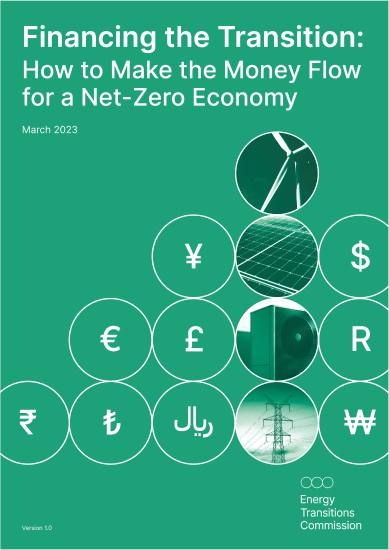Two distinct but equally necessary forms of financial flow
Two forms of financial flow are required for the energy transition: Capital investment, and concessional/grant payments.
The energy transition offers significant opportunities for investors The vast majority of finance can come from private financial institutions and markets if well-designed real economy policies are in place which create incentives to invest. Examples include setting ambitious targets for renewable generation by 2030, carbon prices, and specified date bans on the sales of internal combustion engines (e.g., by 2035 at the latest). Around $3.5 trillion a year of capital investment will be needed on average between now and 2050 to build a net-zero global economy, up from $1 trillion per annum today.
Part of the investment needed will be offset by reduced investment in fossil fuels, cutting the $3.5 trillion per annum requirement to a net $3 trillion. This is equivalent to 1.3% of the likely average annual global GDP over the next 30 years. The true incremental cost of the required investment is therefore far below the gross investment need. But the scale of capital mobilisation and reallocation required will not occur without strong real economy policies in all economies.
Provided good policies are in place, capital investment will deliver positive returns to investors. But achieving some emissions reductions will impose an economic cost – in particular, phasing out coal early where it still remains competitive with renewables, halting deforestation which delivers a positive return to landowners and businesses, and scaling up carbon dioxide removals.
Concessional/grant payments to offset these costs in middle- and low-income countries (excluding China) may therefore be essential and could amount to around $0.3 trillion a year by 2030 if the world is to achieve its 1.5°C objectives. This money could, in theory, come from corporates via voluntary carbon markets, philanthropy, and high-income countries.




